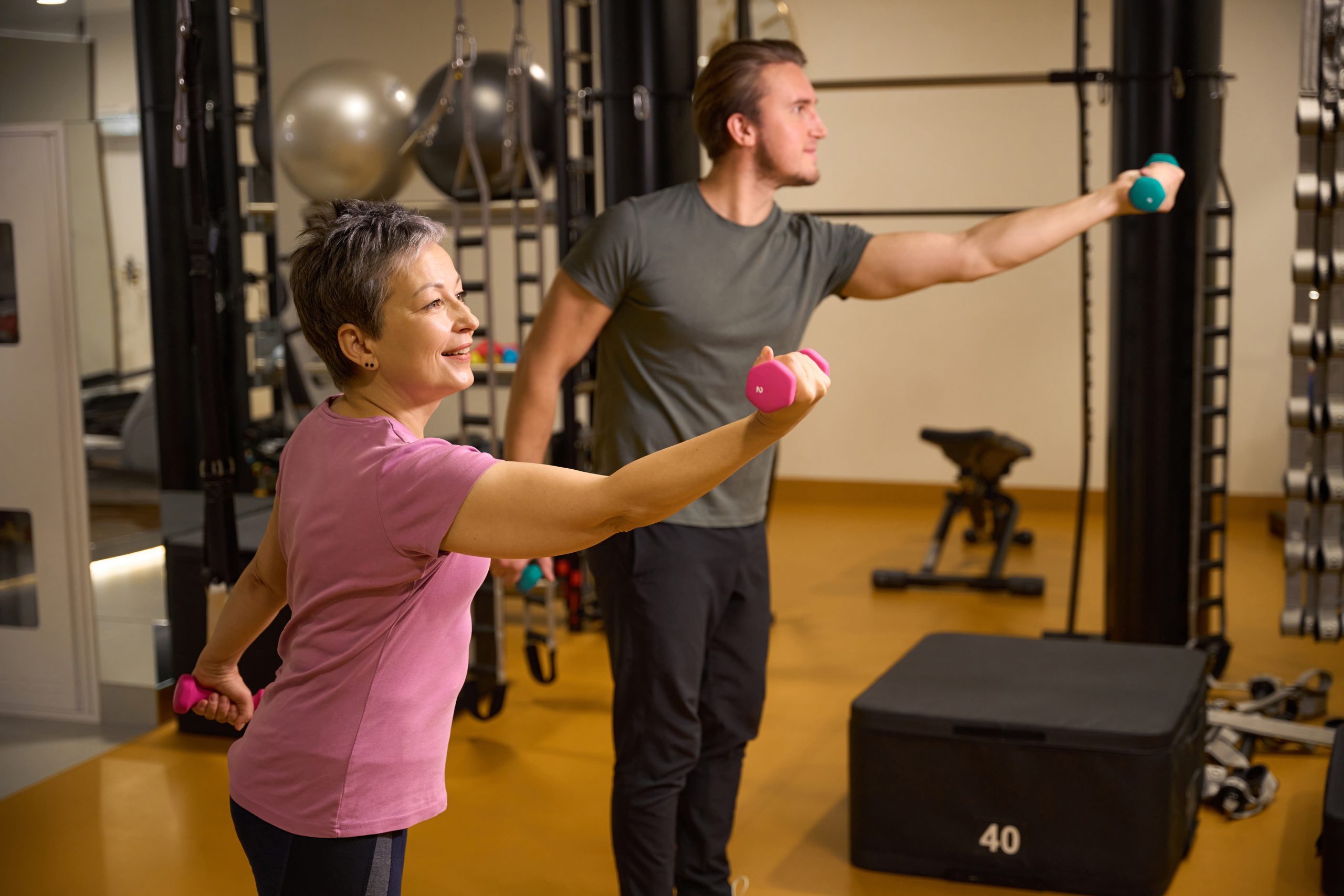This blog post was written in partnership with Ascensia Diabetes Care, a company dedicated to improving the lives of people living with diabetes and helping empower them to take charge of their health and happiness. Before making any changes to your treatment regime, consult with your health-care provider.
Did you know that close to one in three people in Canada has diabetes or prediabetes? If you have diabetes, regular physical activity should be a key part of your management plan (or prevention plan, if you have prediabetes) because:
- Regular physical activity can improve control of your blood glucose (sugar) levels by making your body more sensitive to insulin – a hormone produced by the pancreas that allows your body to use glucose for energy.
- Increased physical activity can work just as effectively as some diabetes medications, with fewer side effects.
- Getting physically active regularly can reduce your risk of diabetes complications such as eye, heart and kidney diseases.
- Regular physical activity can lower your blood pressure.
- Getting physically active regularly can alleviate stress, anxiety and fatigue.
Since November is Diabetes Awareness Month, it’s an ideal time to discuss how to exercise and maximize the benefits of physical activity for diabetes.
How exercise affects blood sugar
- Physical activity helps move glucose from your bloodstream into your muscles, where it’s used as a form of energy.
- Regular strength-training makes your muscles more efficient at using glucose, meaning your body requires less insulin to lower your blood sugar levels.
- High stress levels can worsen insulin resistance through the fight-or-flight response, which shrinks your blood vessels, resulting in less glucose going to your muscles. Since regular physical activity helps reduce stress levels, it improves your body’s insulin response or ‘sensitivity’.

7 tips for exercising safely with diabetes
While physical activity is important, it shouldn’t put your safety in jeopardy. Here are some tips for exercising safely with diabetes:
1. Talk to your health-care provider
Before starting or changing a physical activity routine, ask your health-care provider:
- What types of exercise are best for me?
- How could the activities I want to try impact my blood sugar levels?
- What times of day are the most ideal for me to exercise?
- What blood glucose range is safe when I exercise, and how can I stay within it? This is especially important if you don’t typically notice low blood sugar symptoms.
- What are my blood glucose testing requirements for exercise?
- How could my diabetes medication(s) affect my blood sugar levels as I get more active?
- Is there anything in particular I should eat before or after exercising?

2. Check your feet and wear proper shoes
Because some people with diabetes experience foot problems, check with your physician, podiatrist or chiropodist to make sure you have suitable shoes. If it’s unsafe to walk, jog or play sports, try activities like cycling or swimming instead.
3. Wear medical identification
Wherever you choose to get active, it’s important to wear a medical identification bracelet or necklace indicating that you have diabetes and whether you take insulin in case of a medical emergency.
4. Check your blood sugar levels before, during and after exercising
Since exercise and some diabetes medications like insulin both lower your blood glucose, they can raise your risk of hypoglycemia, which is when your blood sugar is too low (below your target level). To see how exercise impacts your blood glucose levels, especially if you’re starting a new activity or recently made changes to your medication or insulin, it’s important to check your blood sugar before, during and after exercise using a blood glucose meter like CONTOUR®NEXT GEN, which is easy to use and highly accurate.
- Pre-workout blood sugar level guidelines: If you take insulin or other medications that can result in low blood sugar, test your blood sugar 15 to 30 minutes before you exercise.
- Monitoring blood sugar during an exercise session: If you’re planning to do a long workout, check your blood sugar every half hour, as this will tell you if your blood glucose level is stable, increasing or decreasing. If your blood sugar is below your target level and/or you feel shaky, weak, dizzy or confused, stop exercising immediately.
- Checking blood sugar following a workout: Check your blood sugar right after exercising and again over the next few hours. Even four to eight hours after a workout, you can experience low blood sugar. The more intense your exercise session was, the longer it will impact your blood glucose levels.

5. Keep yourself properly fueled
Bring a quick-acting carbohydrate source such as glucose tablets, candy, fruit juice or regular soda to wherever you’re planning to exercise in case you experience hypoglycemia. To help prevent a blood glucose drop after a workout, eat a snack with slower-acting carbohydrates like granola bars or dried fruit. These registered dietitian-approved recipes for energy balls and trail mix cookies both contain slower-acting carbohydrates.

6. Remember the 15:15 rule for hypoglycemia
Hypoglycemia is usually considered mild to moderate when you have symptoms, your blood glucose is below 4 mmol/L, and you can treat yourself. When you experience hypoglycemia:
- Consume 15 grams of carbohydrates such as a glucose tablet, three teaspoons or packets of table sugar dissolved in water, six Life Savers,® one tablespoon of honey, or a 3/4 cup (175 mL) of juice or a regular soft drink.
- Retest your blood glucose 15 minutes later, and if it’s still less than 4 mmol/L after 15 minutes, have another 15 grams of carbohydrate.
After you’ve addressed your low blood sugar, prevent repeated hypoglycemia by eating your usual meal or snack due at that time of the day or having a snack containing 15 grams of carbohydrates and some protein if your usual meal is over an hour away.
7. Exercise with others
If you have diabetes, it’s important to exercise in places where there are other people around in case you experience hypoglycemia and require assistance. So, consider working out at a gym, a community centre or a park where there are others around, or at home when other members of your household are home. You could also join group fitness classes, sports teams or active meetup groups. Not only will they make you more accountable, but they’ll also help you build social connections.

How often to exercise with diabetes
Aim for at least 150 minutes a week of moderate to vigorous aerobic (heart-pumping) physical activity such as brisk walking, cycling, swimming, water aerobics, dancing and/or cardio workouts like the ones on our website. You can spread this out throughout your week by doing 50 minutes of heart-pumping exercise three days a week, 30 minutes five days a week or 25 minutes six days a week. Ideally, you want to ensure you’re moving your body daily and limit extended periods of sedentary time. If 150 minutes seems overwhelming, start with 10 minutes a day and gradually work your way up to that goal.
People living with diabetes should also engage in resistance (repetitive strength-building) exercises like weightlifting and calisthenics (bodyweight) exercises two to three times a week. If you choose to start doing resistance exercises, it’s a good idea to first get instructions from a certified exercise specialist, a diabetes educator or a resource like a credible workout video and start slowly. Our website has many strength-training exercise videos to choose from.

Where to find support for diabetes
- Contact your primary health-care provider if you have concerns about exercising while living with diabetes.
- Diabetes education centres and support groups are available across Canada – ask your health-care provider for more information.
- Ascensia Diabetes Care’s website has information on diabetes, including its complications, how to take control of it, interpreting your blood glucose results, tips for parents and other helpful resources.
- Diabetes Canada’s website has many articles, podcast episodes and virtual learning opportunities.
- Diabetes Quebec provides information on diabetes and diabetes management, as well as online learning modules (in French only).
- University of Toronto’s Patient & Family Education Resources make it easy to access multiple resources about diabetes in one place (e.g., diabetes basics, nutrition, physical activity and risk assessment).
As you’ve seen, regular exercise is a key part of diabetes management, and there are many ways to do so safely and maximize the benefits when you live with diabetes, from talking to your health-care provider to regularly monitoring your blood sugar with tools like CONTOUR®NEXT GEN. Visit AscensiaDiabetes.ca to learn more.








